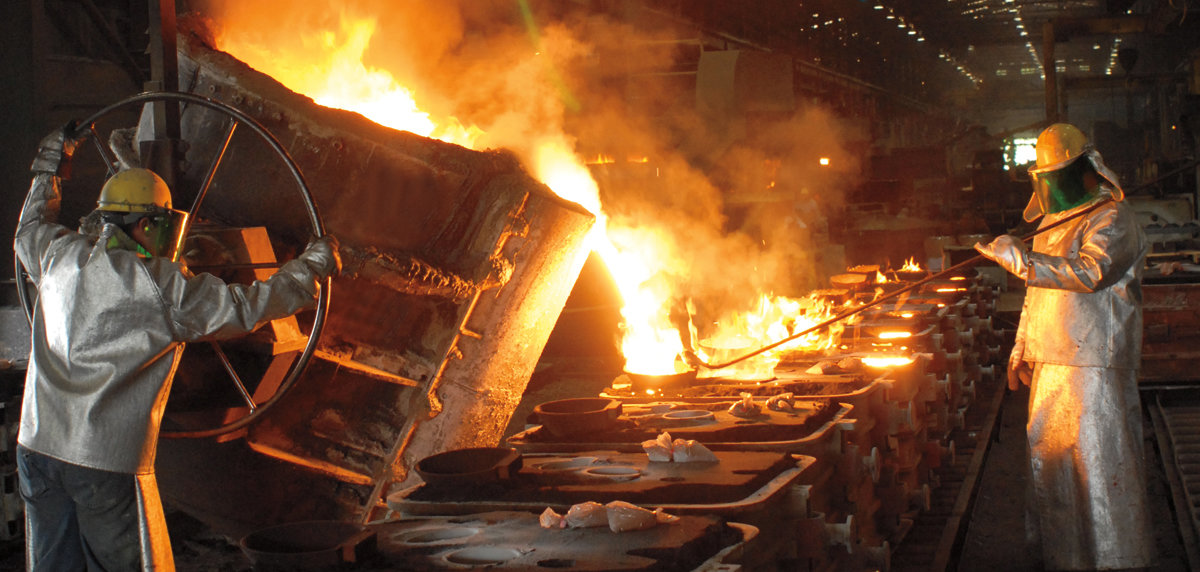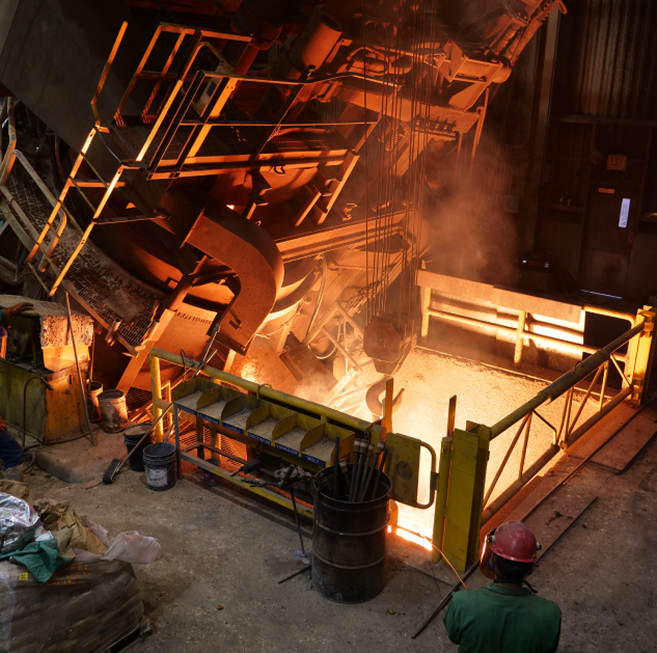A closer examination at the complex processes inside a Metal Foundry
Discover the Ingenious Strategies Utilized in a Metal Foundry for Superior Casting Results
In today's competitive production landscape, metal foundries are significantly adopting cutting-edge methods to improve spreading results - Metal Foundry. Advanced computer simulations permit precise modeling of molten metal behavior, while 3D printing enables quick manufacturing of intricate mold and mildews. Furthermore, environment-friendly products and automation streamline procedures. These advancements guarantee substantial improvements in performance and top quality control. The effect of these technologies on sustainability and production practices remains to be completely explored.
Advanced Computer Simulations in Metal Casting
Advanced computer system simulations have actually transformed the metal casting process by enhancing precision and performance. These innovative devices permit engineers to create online designs of cast components, enabling them to predict the actions and assess of liquified metal throughout the spreading stage. By imitating various specifications such as temperature, circulation price, and air conditioning rates, producers can determine prospective defects prior to physical production begins.
This aggressive technique lowers waste and decreases expensive errors, inevitably resulting in boosted item high quality. In addition, simulations promote the optimization of mold and mildew styles, guaranteeing that they meet the details demands of each project. The combination of computational fluid characteristics (CFD) and finite element evaluation (FEA) further adds to the accuracy of these simulations, offering insights that were formerly unattainable. Consequently, progressed computer system simulations have come to be a vital component of contemporary metal foundries, substantially advancing the market's capacities.
3D Printing for Molds and Patterns
3D printing has actually become a groundbreaking strategy for developing molds and patterns in the metal foundry industry. This technology enables the rapid production of intricate geometries that conventional production methods have a hard time to attain. By using additive manufacturing, foundries can create complex styles with decreased lead times and material waste. The ability to produce mold and mildews on demand enables better versatility in style models, promoting faster prototyping and modifications.
3D printing can make use of a variety of products, consisting of steels and plastics, tailored to specific casting demands. This versatility boosts the accuracy of molds, causing exceptional spreading outcomes with boosted surface area coatings. Additionally, the reduction in the number of parts needed simplifies assembly procedures, even more enhancing manufacturing effectiveness. As foundries remain to embrace 3D printing, they are positioned to redefine market requirements, leading the way for development and boosted productivity in metal casting procedures.
Eco-Friendly Products and Processes
As the metal foundry sector faces raising pressure to minimize its ecological impact, the adoption of eco-friendly products and processes has actually ended up being vital. Foundries are currently exploring lasting choices to standard products, such as utilizing recycled metals and bio-based binders. These materials not only decrease waste but also reduced energy consumption during manufacturing.
Furthermore, improvements in sand casting techniques have actually led to the usage of synthetic sands that are less harmful to the environment. Shops are likewise applying cutting-edge procedures like molten metal therapy that decreases discharges and improves the quality of cast products.
Furthermore, water-based finishes have replaced harmful solvents, advertising a more secure work setting (Aluminum Foundry). By integrating these environment-friendly practices, metal foundries can markedly lower their eco-friendly influence while keeping high-quality spreading results. This shift not just profits the environment however also straightens with the growing consumer demand for sustainable production remedies
Automation and Robotics in Foundry Workflow
While the metal foundry industry accepts innovation, the assimilation of automation and robotics is transforming operations significantly. Automated systems enhance check out this site processes such as mold making, metal putting, and casting ending up, substantially boosting efficiency. Robotics promote the handling of heavy products, reducing the danger of office injuries and ensuring more secure settings.

Additionally, using automated led vehicles (AGVs) maximizes product transport within centers, ensuring prompt delivery of components to proper workstations. By implementing these innovations, foundries can adapt to varying demands with higher dexterity, inevitably leading to enhanced earnings and competitiveness in the marketplace. As automation and robotics proceed to develop, they hold the potential to redefine conventional foundry practices and drive additional developments in casting techniques.
Real-Time Surveillance and Quality Assurance Techniques
The innovations in automation and robotics have paved the means for more sophisticated strategies to quality control in metal foundries. Real-time surveillance systems make use of advanced sensing units and information analytics to track vital criteria throughout the spreading process. These systems constantly assess variables such as material, temperature, and pressure structure, enabling prompt discovery of discrepancies from developed criteria.
Quality control techniques now include artificial intelligence algorithms that analyze historical information to anticipate possible problems before they happen. This proactive strategy reduces waste and boosts overall production performance. Additionally, incorporated responses loops enable rapid adjustments, guaranteeing that each spreading meets rigid top quality needs.
The application of digital twins-- virtual replicas of physical properties-- has actually also transformed quality assurance, permitting engineers to mimic and maximize processes in real-time. With each other, these cutting-edge methods significantly enhance the integrity and quality of spreadings, establishing brand-new sector standards in metal foundry operations.
Regularly Asked Questions
What Sorts of Metals Are Frequently Cast in Shops?
Generally cast steels in visite site foundries consist of aluminum, brass, bronze, and iron. Each metal displays special residential or commercial properties, making them ideal for various applications, such as automotive components, machinery, and imaginative sculptures, boosting their flexibility in production.

How much time Does the Casting Process Generally Take?
The spreading procedure generally takes a number of hours to days, depending on aspects such as the complexity of the mold and mildew, sort of metal utilized, and cooling needs. Each phase influences the total duration substantially.
What Precaution Are in Area for Foundry Employees?

Exactly how Are Flaws in Castings Identified and Addressed?
Defects in spreadings are recognized via visual examinations and non-destructive testing methods. When found, foundry employees address them by improving procedures, readjusting product structures, and carrying out rehabilitative actions to guarantee high quality and conformity with requirements.
What Is the Expense Variety for Metal Casting Providers?
The cost array for metal casting services generally ranges $1 to $10 per extra this post pound, depending upon variables such as product type, complexity of the style, and manufacturing volume, influencing general prices significantly.
In today's affordable production landscape, metal foundries are progressively adopting innovative methods to improve spreading results. As the metal foundry industry faces boosting pressure to minimize its ecological footprint, the adoption of green materials and processes has actually ended up being vital. Factories are now discovering lasting choices to traditional materials, such as using recycled steels and bio-based binders. By integrating these eco-friendly practices, metal foundries can substantially lower their environmental influence while keeping top notch spreading outcomes. The developments in automation and robotics have led the way for extra advanced approaches to top quality assurance in metal foundries.